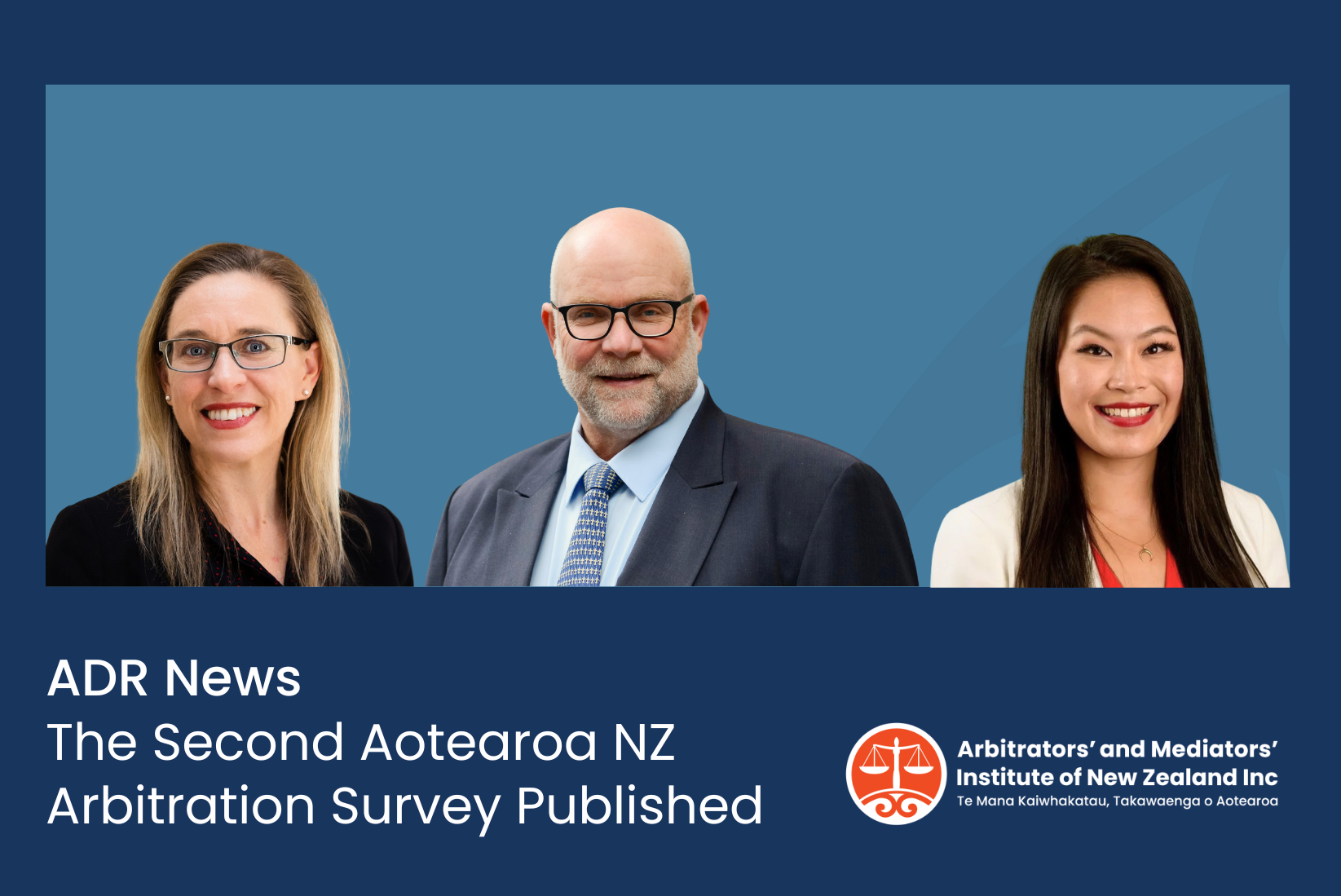New Insights into Arbitration in Aotearoa: The Second Aotearoa Survey Published
AMINZ Vice President Dr Anna Kirk, previous AMINZ President Royden Hindle, and Young AMINZ co-chair Diana Qiu have just released the Second Aotearoa New Zealand Arbitration Survey, the follow-up from their pioneering Inaugural Aotearoa New Zealand Arbitration Survey in August 2022.
Following the announcement of highlights in the Second Survey results at AMINZ Arbitration Day 2025 last month, Anna, Royden and Diana are thrilled to be able to release the full report.
“We are proud to present the results of our second survey to the dispute resolution community,” says Royden. “The survey builds on the foundation of the Inaugural Aotearoa New Zealand Arbitration Survey in August 2022 and provides a richer and more complete picture of current arbitration practice in Aotearoa.”
A key finding from the report, that covers the period 1 January 2021 to 31 December 2022, is that the average duration of an arbitration in New Zealand over the relevant period was 10.65 months, with a median duration of 7 months. Duration was measured from the appointment of the arbitrator to the delivery of a substantive award. The data collected on duration was more comprehensive than for the Inaugural Survey, although the Inaugural Survey recorded a similar average of 10.85 months.
The authors note that it is gratifying to see the broader Second Survey produce results consistent with the smaller data set from the Inaugural Survey, demonstrating that arbitration offers an efficient form of dispute resolution, when compared with litigation.
Interestingly, there has been a shift in the subject matter of disputes compared to the findings of the Inaugural Survey, with lease and property-related cases dominating the subject matter of arbitrations. There has also been an increase in the use of institutional rules, alongside those arbitrations conducted under the Arbitration Act alone.
The Second Survey results show an improvement in the gender balance of those appointed as arbitrators, but regression in the ethnic diversity of arbitrators. “It is important that the pool of arbitrators available for appointment reflects the community we serve”, says Anna. “It is gratifying to see more women being appointed as arbitrators but concerning that this trend is not mirrored in ethnic diversity. This tells us we need to do more to encourage those from diverse backgrounds on their arbitration journey.”
In his Foreword, Hon Rodney Hansen CNZM KC says of the Second Survey: “[W]ith the second survey comes the beginning of a longitudinal study which makes it possible to discern trends and detect changes over time. The snapshot has become a moving picture which offers new insights into the way in which arbitration in New Zealand is working. The helpful graphics and tables and the thoughtful commentary complement and enhance the raw data.”
The Second Survey was conducted in collaboration with NZDRC and is available from their website.
Anna, Royden and Diana will be presenting their findings at a free online webinar on Wednesday 13 August 2025, presented by NZDRC. You can register here.


